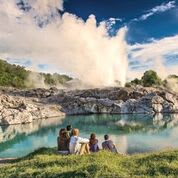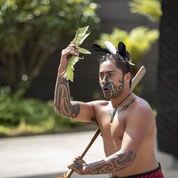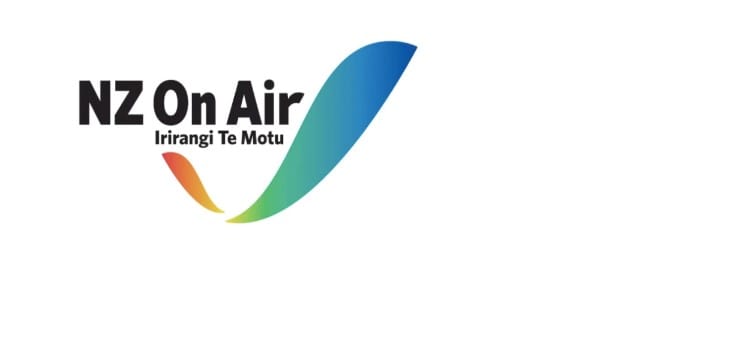It’s been a pretty awful six months for Volcanic Air but the Rotorua-based scenic flights company is confident there’s smoother air ahead.
“We’ve had a fair bit on our plate,” managing director Phill Barclay says.
He’s not wrong.
On December 9, helicopter pilot Brian Depauw saved the lives of four German tourists when he told them to jump in the water as Whakaari White Island erupted.
Depauw and two of the tourists were unharmed as they took refuge beneath the surface but the other two didn’t make it into the water and suffered severe burns.
Photos of the company’s ash-covered helicopter wreckage told part of the tale of a tragedy that saw 21 of the 47 people on the island at the time of the eruption killed.

Barclay says he couldn’t be prouder of how the company responded that day, helping with rescues, nor with how his staff have coped in the days and months since.
The fallout from that tragedy has seen flights to White Island scrapped, and with that a large part of Volcanic Air’s business has disappeared. Then Covid-19 struck. The small but successful company that would normally carry 10,000 passengers a year took another blow.
But Barclay is confident they will fly again. “We have to be optimistic about the future but we have to be cautious too.”
Barclay, who has been with Volcanic Air since 1992 and owned with his wife Dorien since 2002, knows tourists will return to Rotorua, it’s just whether they come back soon enough.
“But Volcanic Air will be here in a year and we will be here after that. It’s important we continue to operate because we’re an iconic business and we employ some terrific people.”
Some, though, have been laid off, with a staff of 16 before the eruption dropping to 11 after it and then down to a skeleton crew of five since the Covid-19 lockdown.
“White Island cut 50 percent from the business and we had to take drastic measures then, reducing staff and costs, so we had already retrenched when Covid turned up in mid-January.”
After eight weeks of virtually no revenue, Barclay says they are now ready to re-launch with the goal of being more active in the domestic market and, when it opens again, Australia.
About $800 million a year is pumped into Rotorua thanks to tourism and about 59 percent of the city’s visitors are Kiwis. So there is the potential that things could bounce back quickly.
The problem, though, is that no one knows how willing and financially able New Zealanders will be to travel again. It’s a point not lost on Takurua Mutu who owns Mountain Bike Rotorua, whose customers are mostly Kiwis.
They might want to get back on the bike, he says, but can they afford it?
Mutu, whose parent company MDA has fingers in many pies – including labour hire, luxury escapes, educational tours, event and conference organisation, retail, cafes and mountain biking – has ambitions beyond just surviving.
“We want to put people before profits and to hold on to all our staff during the Covid crisis. It’s a lofty goal and we may fail.”
For now he is holding the line. The government’s wage subsidy was a huge help, but Mutu and his brother Tuhua, co-owner of MDA, are now using their savings to pay their 60 staff. “We’re burning through the cash reserves,” he says, adding that spending for May was four times the revenue and it will be 10 times revenue in June.
Other companies have already laid off staff. Ngai Tahu Tourism has mothballed the Agrodome and Rainbow Springs as part of a nationwide shutdown that will see 300 people lose their jobs over the next two months.

Rotorua’s Te Puia, the Maori culture and arts and crafts centre, has laid off most of its staff since closing it on the Sunday before lockdown. It won’t reopen till September. Even then, CEO Tim Cossar is predicting bleak times for at least another year, and possibly for another four or five.
“Before the lockdown we were averaging about 2500 visitors a day and about half a million a year. We may not see those big numbers again till 2025 or 2026, if we ever do again.”
Te Puia relies heavily on the international market, with about 93 percent of its customers foreigners and many of them from Asia. So they were hit early when China closed its borders, with Korea following not long after.
When the cruise ships stopped coming to New Zealand, Cossar says, “we had the guts ripped out of the tail end of the high season.” It cost about $4 million in lost revenue and Cossar has had to lay off 135 staff, keeping just 30.

It’s a familiar tale across the steamy city.
“Long term, our unemployment is not looking good,” says Rotorua mayor Steve Chadwick. “We have a particularly grim time ahead of us.”
Complicating it for everyone is the uncertainty around when the international borders will re-open and, once they have, whether people will want to travel. And domestically, there is the big issue of just how much money Kiwis will be prepared to spend and whether tourism operators will adjust their prices to reflect that.
“You don’t have to tell them that,” Chadwick says of operators continuing to charge international prices to Kiwi customers. “They are early adapters, the tourism industry, and this city, this region was built on tourism. They know they have to be geared right for the domestic market.”
During lockdown, the only action at Te Puia was in the kiwi enclosure where star attractions Kahu, Mikaere and Awhi were enjoying the peace and quiet, their handlers their only visitors.
“It’s been bloody awful, what’s happened in the marketplace, it’s dreadful and it’s hard to take,” says Tim Cossar. “But we are long-term players in the industry and we aren’t shutting up shop and walking away. We are refining what we do and we are looking to the future with a degree of optimism.”
It might be the Kiwi way, but right now, Rotorua needs Kiwis to come and visit too.
* Made with the support of NZ on Air *




